I would like to change the colour of the bars of the histogram on a pairs plot whereby I have a different colour for each variable. It appears I can change the colour of ALL diagonal histograms by changing the 'fill =' option to a new colour but when I attempt to substitute a list of four colours I get the error report:
"r: Aesthetics must be either length 1 or the same as the data (15): fill"
So it seems the colours are somehow linked to the number of bins specified for the histograms not the fill colour for each histogram?
What is the best way to achieve a different colour for each histogram on the diagonal?
Example code below:
require(GGally)
# function for scatter plots with smoothed trend line
lower_plots <- function(data, mapping, ...) {
ggplot(data = data, mapping = mapping) +
geom_point(color = "black", shape = 1, size = 1, alpha = 1) +
geom_smooth(method = "gam",...)
}
# colour palette for histograms - subsitue for fill = ?
clrs <- c("red","green","blue","orange")
# pairs plot
ggpairs(iris,1:4,
diag = list(continuous = wrap("barDiag", bins = 15, fill = "blue")),
lower = list(continuous = wrap(lower_plots, color="red", se=F))) +
theme_light(base_size = 12) +
theme_light(base_size = 12) +
scale_fill_manual(values = ZNS[order(ZNS$Zone), 4]) +
theme(panel.grid.minor = element_blank(), panel.grid.major = element_blank()) +
theme(plot.margin = unit(c(2.5,2.5,2.5,3.5), "lines")
)

